
by Christian Crouse
"Utopia project" is an annual summer workshop organized by the Athens School of Fine Arts in Rethymno Crete.
UTOPIA & VIOLENCE
EXPERIMENTATION AND RESEARCH IN CONTEMPORARY ARTISTIC PRACTICES
6th Painting Studio ASFA (Athens School of Fine Arts)
Timetable: Friday of 29 June - Friday of 13 July 2007
Utopia is a concept that always fascinates artists as a free expression of their unlimited imagination and desire. Art, via the utopia is released by the restrictions of reality and finds its way to the expression of its visions. On the occasion of this relation, the workshop is dealing with the prolific and multi discussed significance of utopia. The term utopia in the daily vocabulary is connected with the ideal, future, the unfeasible and creates margins for many and often contradictory interpretations.
Utopias are the places of dreams and hope for a better life, that give exit from the incomplete reality. In certain cases they oppose in scientific or biological laws, involving the metaphysics, sometimes they are ephemeral shelters that do not set particular sociopolitical reflections, but usually their creation is based on the intention to criticize the rendered institutions and the structure of existing society.
In 1515 More wrote his most famous and controversial work, Utopia, a novel in which a fictional traveler, Raphael Hythloday (whose first name is an allusion to the archangel Raphael, who was the purveyor of truth, and whose surname means "dispenser of nonsense" in Greek), describes the political arrangements of the imaginary island nation of Utopia (a play on the Greek ou-topos, meaning "no place", and eu-topos, meaning "good place"). In the book, More contrasts the contentious social life of European states with the perfectly orderly and reasonable social arrangements of the Utopia, where private property does not exist and almost complete religious toleration is practiced.
Many commentators have pointed out that Karl Marx's later vision of the ideal communist state strongly resembles More's Utopia in regards to individual property, although Utopia is without the atheism that Marx always insisted upon. Furthermore, it is notable that the Utopia is tolerant of different religious practices but does not advocate tolerance for atheists. More theorizes that if a man did not believe in God or an afterlife of any kind he could never be trusted as he would not be logically driven to acknowledge any authority or principles outside himself.
More might have chosen the literary device of describing an imaginary nation primarily as a vehicle for discussing controversial political matters freely. His own attitude towards the arrangements he describes in the book is the subject of much debate. While it seems unlikely that More, a devout Catholic, intended pagan, proto-communist Utopia as a concrete model for political reform, some have speculated that More based his Utopia on monastic communalism based on the Biblical communalism described in the Acts of the Apostles. Due to the nature of More's writing, however, it is at times difficult to tell his satirical jabs at society from how he actually believes things should be.
Utopia is often seen as the forerunner of the Utopian genre of literature, in which different ideas of the "ideal society" or perfect cities are described in varying amounts of detail by the author. Although a typically Renaissance movement, based on the rebirth of classical concepts of perfect societies as propagated by Plato and Aristotle, combined with Roman rhetorical finesse (see Cicero, Quintilian, epeidietic oratory (that of praise or blame)) Utopianism continued well into the enlightenment age.
The original edition included details of a symmetrical alphabet of More's own invention, called the "Utopian alphabet". This alphabet was omitted from later editions, though it remains notable as an early attempt at cryptography that may have influenced the development of shorthand.
MORE from Wikipedia...























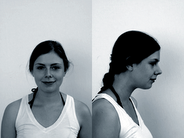








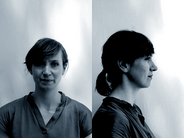
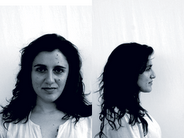

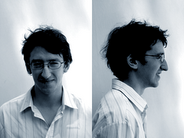


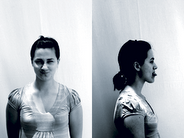





[…] We know that space has been and still is the fundamental metaphor in socio-political thought and practice, including the oppositional imagination of alternative futures. As far as analysis is concerned, the base-superstructure schema and the public-private divide, both (hierarchical) spatial representations of the social, offer characteristic examples. The first one has marked the trajectory of Marxist theorization, while the second underlies the liberal understanding of many contentious issues (from corruption to relations between religion and politics). In the field of political imagination, the most important example is, of course, utopian discourse. Utopias have been traditionally imagined in spatial terms – as islands, enclosures or colonies, as delimited spatial entities (Anderson 2006: 42). Typical of this obsession with space is, in More’s Utopia, its representation as an island divided into fifty-four cities, each divided again into thirty households (Jameson 2004: 39) as well as the rules regulating – ordering – all social activities. Likewise, the kernel of many utopian visions is illustrated as a building, such as Bacon’s House of Solomon or Fourier’s Palace or Phalanstery, etc. The metaphor of space and the reinstatement of its homogeneity – or, at least, a celebration of its nostalgic trace – has remained to a very large extent dominant within political imagination in the Left both in its critical and utopian dimensions. Even somebody like Giorgio Agamben, who has followed the delicate transformations of biopolitical sovereignty through a very sophisticated theoretical prism, aiming at destabilizing simplistic spatial models – hence his insistence on ‘thresholds’ and ‘zones of indistinction’, on ‘inclusive exclusions’ and paradoxical topologies and flows – cannot refrain from using the quite traditional spatial model of the container. How else can one understand his claim that ‘today it is not the city but rather the camp that is the fundamental biopolitical paradigm of the West’? (Agamben 1998: 181). Even if the camp is conceptualized in a way transcending simplistic notions of localization (land), it does remain a form of localization and continues to be conceived in rather traditional spatial terms: the birth of the camp signals ‘the political space of modernity itself’, while the state of exception, of which it is the materialization, is described as ‘a new and stable spatial arrangement’ (Agamben 1998: 174-5). What is at stake in it is the ‘creation of a space’, the delimitation of a space, containing the threshold of indistinction between bare life and juridical rule (Agamben 1998: 174) and this containing spatial function is incarnated in a proliferating variety of physical spaces (one example is offered by the zones d’ attente in French international airports) (Agamben 1998: 174). No wonder that in the cover of the US edition of Homo Sacer one finds a topographical master plan of Auschwitz.
The question is to what extent such spatial metaphors can still account for the complexity of our world, to what extent they liberate or enslave political imagination. My worry is that such paradigms and models reproduce on another level the repression of the political characteristic of the post-democratic late capitalist city. We know, for example, that utopia involves a ‘suspension of the political’ (Jameson 2004: 43). And that also applies to its radical versions. In fact, such an anti-political tendency, a ‘post-political vision’, has generally characterized the radical tradition in the West. This is what Schwartz has described as the ‘antipolitical legacy’ of the radical tradition. A big part of radical theory – from Rousseau to Marx and Lenin – has ‘sought to transcend politics through the creation of conflict-free societies’ fulfilling ‘a universal conception of “true human interests”, thereby eliminating social conflict and the need for politics’ (Schwartz 1995: 3, 21). Both reactionary and progressive utopias have involved spatializations repressing the political. In the words of Pierre Rosanvalon, ‘The liberal economic utopia of the eighteenth century and the socialist political utopia of the nineteenth century paradoxically are part of the same representation of society founded on the ideal of the abolition of politics’ (Rosanvalon 2006: 153). And isn’t the situation today similar with the post-democratic consumerist utopia and the appealing immanentist idea that resistance to it does not require any real political mediation? We also know that explanations based on the base-superstructure model – and the same might apply to the fetishization of the public-private distinction – have neglected or even foreclosed the element of the political (Laclau and Mouffe 1985). Even in Agamben – at least in Homo Sacer – the price to be paid for locating the metaphor of the camp at the heart of a dystopian historical dialectic, which continuously advances incessantly colonizing more and more aspects of the social, seems to be the ultimate repression of the political. […]
References
Agamben, Giorgio, Homo Sacer: Sovereign Power and Bare Life, Stanford: Stanford University Press, 1998.
[…] In pre-modern societies religious imagination was the predominant discursive horizon for the inscription and administration of negativity. There is no doubt, however, that modernity has signaled a shift in our symbolic and imaginary administration of negativity and contingency. On the one hand, it has highlighted its constitutive nature: a world without God is a world visibly lacking the promise and the guarantee of a final resolution of negativity. On the other hand, unable to assume full responsibility for such a radical recognition, such a disruptive awareness, modernity has ‘reoccupied’ the ground of a pre-modern ethics of harmony, often substituting God with reason. What are the political and institutional implications of these developments? It seems that political modernity has oscillated between (at least) three responses vis-à-vis negativity, the lack of (total) jouissance: I will refer to them as the utopian, the democratic and the post-democratic response.The first response, one reoccupying the ground of pre-modern metaphysics, is best exemplified by some mutations of modern political utopianism. I use utopia here in the strong sense of the word, as a discourse that offers final political solutions from the point of view of a ‘subject supposed to know,’ whose opaqueness and authority is never questioned per se. Fascism and Stalinism – notwithstanding their many important differences – are two obvious examples. What is dominant here is a fear to encounter negativity without recourse to the certainty of attaining another order (of limitless jouissance), a utopian society, a harmonious future eliminating negativity once and for all. The young Trotsky, a twenty-two year old exiled in Siberia, has expressed through his writings this sentiment in the most revealing way: ‘As long as I breathe, I shall fight for the future, that radiant future in which man, strong and beautiful, will become master of the drifting stream of his history and will direct it towards the boundless horizon of beauty, joy and happiness!’ (Trotsky in Deutcher 1954: 54). A closer look, however, reveals that this desire to overcome negativity once and for all, relies on the negative itself, it only makes sense within a society of prohibition. Societies of prohibition are marked throughout by such a polarisation between prohibition, sacrifice, the Law, and the dream of transgression incarnated in the desire for utopia. Without an explicit limitation, without the castrating command of the Law, utopia loses all its lure. Moreover, utopia not only relies on negativity but is also likely to produce negativity: whenever a conscious attempt was made to realise such fantasies, to institute human reality according to a plan promising to resolve social contradiction, dissimulate political antagonism, and permit an encounter with the lost/impossible jouissance, the results were catastrophic, best described by ‘the triple knotted effect, of ecstasy, the sacred and terror’ that Alain Badiou has called disaster (Badiou 1999: 133). […]
| Blog: |
| utopia project 2007 |
Topics: |
| art, politics, utopia |
2 comments:
The idea of utopia has to be clearly delimited when it comes to dealing with such a broad spectrum of instances of occurrence of such an all-encompassing yet irregular term. This is especially true in the case of the Nazism, where reanimated antediluvian propheticism meets the inevitability of industrial efficacy.
The film clearly shows the true anti-historical and anti-modernist dimension of Nazi idealism. The ideals permeating the mythology of the German nationhood are conceived as rigid and timeless, any progressive historical narrative has been dispensed in favor of an utter negation of a dialectic conception of dynamic historical processes.
The ideal of the superiority of the Aryan race is an eternal truth, there is nothing to be achieved further regarding this but a full manifestation of this fait accompli in the reality of the third Reich. This transcendental conception of utopia signals the end of time, the Reich is now and will be forever. A similar negation comes into play in the conception of the spatial limits of this dystopia, all external space has already been annexed and a vicious compartmentalization ensues seeking to fold all inner space unto itself, a loss of individuality through devastating compression and a deflation of humanity into a volume-less mass, ready to be tagged, commodified, shipped or liquefied according to need.
This defacing of humanity is nothing but the grand fantasy of corporatism, where the term itself necessitates the subjugation of all parts into the greater "corpus". According to Mussolini corporatism and fascism were interchangeable terms.
In this light the fascist/Nazi utopia can only be conceived as part of the greater latent dream of capitalism, the subliminal conquest of all that can be described as parts of the human experience (corporeal or intellectual) through their commodification and utilization. Extension, division, fusion or elimination of such parts is dictated in absolute terms, there is only one utter goal: efficiency of the body. Man doesn't march as man anymore and his body is shown as a voyeuristic peek into the inner working of the body corporate; admire the cog for its mechanical perfection ensures the infallibility of the machine.
Here's a very important piece of critique by Susan Sontag dispelling many myths about Leni Riefenstahl and assessing the continuity of her work:
http://www.history.ucsb.edu/faculty/marcuse/classes/33d/33dTexts/SontagFascinFascism75.htm
Post a Comment